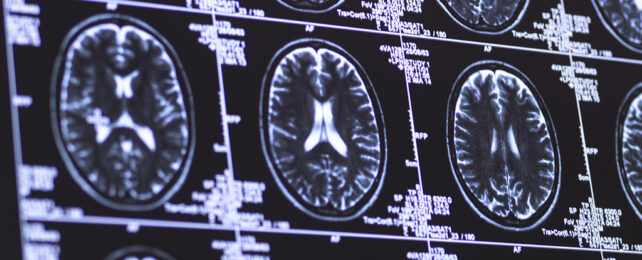Diagnosing dementia early gives us more time to put precautions in place and to study exactly how the condition progresses – and a new method for predicting conditions such as Alzheimer's disease is promising up to nine years of advance warning.
The method, developed by a team from the Queen Mary University of London in the UK and Monash University in Australia, involves a neurobiological model that analyzes brain scans captured by functional magnetic resonance imaging, or fMRI.
In tests, the model was more than 80 percent accurate at predicting the development of dementia. That has huge potential in terms of early diagnosis, and it also addresses another challenge: the large number of people with dementia who don't get diagnosed at all.
"Predicting who is going to get dementia in the future will be vital for developing treatments that can prevent the irreversible loss of brain cells that causes the symptoms of dementia," says neurologist Charles Marshall, from the Queen Mary University of London.
Specifically, the team looked at a key part of the brain's system, called the default mode network (DMN). It's the first part of the brain to be affected by damage caused by Alzheimer's disease, the most common form of dementia, and it plays a key role in connecting up different parts of the brain to keep our thoughts in order.
The test included brain scans of 81 individuals, who were undiagnosed at the time but who later went on to develop dementia, as well as 1,030 matched controls. Using their model, the team was able to spot signs of dementia in some brains up to nine years ahead of time. The fMRI scans are easy to administer, and only take a few minutes to complete.
As well as hitting that 80 percent accuracy rate, the technique could also predict when a dementia diagnosis would be made, within a two-year margin. This is all hugely useful information, and can be cross-referenced against other known risk factors for dementia to build up a better picture of who this disease affects and how it emerges.
"Using these analysis techniques with large datasets we can identify those at high dementia risk, and also learn which environmental risk factors pushed these people into a high-risk zone," says neurologist Samuel Ereira, from the Queen Mary University of London.
The researchers also linked risk factors for Alzheimer's, such as genetics and social isolation, to changes in DMN connectivity. Knowing what triggers these neurobiological conditions is going to be vital in the search for a cure.
Another scenario where the analysis technique is going to be helpful will be in the study of people whose brains show signs of dementia, but who develop symptoms much later on. Understanding why this happens should teach us more about how the condition progresses and how it might be slowed down.
"We hope that the measure of brain function that we have developed will allow us to be much more precise about whether someone is actually going to develop dementia, and how soon, so that we can identify whether they might benefit from future treatments," says Marshall.
The research has been published in Nature Mental Health.
